Travel :Meknez Morocco 4/12/2023
- Lili Naveh
- Apr 12, 2023
- 9 min read
Continuation of a Guided Group Trip. which started on:
4/10 - From Tangier to Casablanca (part 1)
4/11 -Rabat- Imperial capital (part 2)

Departing Rabat
Driving from the West coastline of Rabat to the Eastern inland Mennez

The urban dense landscape was left behind and the scenery changed into pastoral cultivated fields and lots of livestock (ships and cows) which serenely roamed the land grazing freely, the vast plain in between small villages..

An over 2 hour drive (152 km) continued, later through more hilly verdant landscape with many Olive Tree groves in between tended fields
Meknez- the 2nd (out of the 4) imperial city UNESCO Hermitage
The city's name originates from the great Berber tribe Meknassa who dominated eastern Morocco, as far back as the Tafilalet in the 8th c .
It was nick named "little Jerusalem and "Moroccan Versailles"
At the Huge Gate
The bus unloaded the group right in front of the magnificent Bab El Mansour -
huge gate, perhaps the grandest of all imperial Moroccan gateways, which is located on the south side of Place el-Hedim (el-Hedim Square) in the old city,
The gate promised an intricate mosaic tile work and inscriptions across the top .. However Bab El Mansour, unfortunately, has been under construction during the past
3 years, and thus is hidden behind a cloth cover on which the image of the gate is painted.
it was originally the main ceremonial entrance to the Kasbah (royal citadel) of Sultan Moulay Isma'il, built in 1732
The design of the gate is based on Almohad prototypes, with a large horseshoe-arch opening and flanking bastions, The flanking square bastions or towers are supported on four thick squat columns, creating a hollow loggia at the base of the towers.
Almost the entire facade of the gate, including the flanking bastions, is covered in heavy decoration. consisting of a repeating darj-wa-ktaf motif (stylized lozenge-like pattern in Moroccan architecture) which frames the main archway of the gate and fills the spaces above the columns of the flanking bastions
The empty spaces within this motif are entirely filled with colorful polychrome zellij (mosaictilework) blue painted ceramics. The spandrels of the arches are filled with arabesque-painted tiles
Maknez Location/History
Located in northern central part, in the Saïss Plain between the Middle Atlas and the pre-rifan massif of Zerhoun , it is the 6th largest city by population (about 650,000) in the kingdom.
Founded in 1061 A.D. by the Almoravids as a military stronghold, it became a capital under Sultan Moulay Ismaïl the son of the founder of the Alawite dynasty., who turned it into a impressive city in Spanish-Moorish style, surrounded by high walls with great gates,

Sultan Moulay Ismaïl ( (1672–1727),)
Sultan Moulay Ismaïl created a massive imperial palace complex and endowed the city with extensive fortifications and monumental gates.
He established significant diplomatic relations with foreign powers, especially the Kingdom of France, Great Britain, and Spain. Often compared to his contemporary, Louis XIV, due to his charisma and authority
Born around 1645 in Sijilmassa and died in 1727 at Meknes , he was the 7th son of Moulay Sharif and the second ruler of the Alaouite dynasty which lasted for 350 years
He became sultan upon the death of his brother Moulay Rashid in 1672.
Breaking with tradition, he chose to make Meknes as his capital.
During his 55-year reign, which is the longest of any sultan of Morocco. he amassed 12,000 horses, and a harem of over 500 women with more than 800 confirmed biological children, making him one of the most prodigious fathers in recorded history.
The creation of a strong army, of about 150,000 warriors, originally relying on the 'Guichs' tribe (especially the Udaya) and on the Black Guard (or Abid al-Bukhari), black slaves who were totally devoted to him. granted him a success in his military combats against rebellious local tribes, in the Maghrebi War against the Regency of Algiers and against the Europeans.
He expelled the Europeans from the ports they had occupied: Larache, Asilah, Mehdya, and Tangier.and he kidnapped thousands of European Christians prisoners , from whose families he extorted ransomed fees.
Financing his rule off Piratism he controlled a fleet of corsairs based at Salé-le-Vieux and Salé-le-Neuf (now Rabat), which supplied him with European Christian slaves and weapons through their raids in the Mediterranean and all the way to the Black Sea.
Marin jihad by the corsairs army served as revenge tactic in cooperating with Tunis and and Algiers, invoked by the forced transferred of the 1492 Spanish expulsion.
Over 1.5 Million Muslims, as well of 250,000 Jews, Between 1609 and 1614 - the Moriscos -were expelled from Spain for political and religious reasons.
All Morisco communities who had to leave their villages in Spain. ended in Northern Africa, if they were not just dumped at sea.
The "warrior king" as known by his native country people, Moulay Ismail was nicknamed the 'bloody king' by the Europeans, due to his extreme cruelty imposed upon his Christian slaves.
For 59 years Muslim/Berber pirates from the third world , brought prosperity into their territories by threatening and plundering European kingdoms, in kind of .reverse colonialism
In 1625, corsairs were said to have captured 1,000 seamen in the Plymouth area alone
Pirates operating out of north Africa enslaved thousands of men, women and children from the British Isles. Adam Nichols describes the often faltering attempts to release the captives from a life of hard labour and torture
Qara Jail
In addition to the construction of an enormous prison system labyrinth - Qara Prison - an underground vaulted hidden chambers built in Ambassadors Square the early 18th c part of the Kasbah of Moulay Ismail , was where 40,000 slaves/ inmates, mostly Europeans captured at sea were jailed often for life without seeing the day light ,and up to their death, Moulay Ismail also left behind him more uplifting treasures.(more)
The 1755 earthquakes destroyed parts of the prison complex.
Under the French Protectorate, the location was occasionally used to detain members of the Moroccan resistance.
Some of the prison's passages were sealed with cement by the French authorities to prevent people from getting lost.
This prison's site we were only were told about, has been going through renovation and may be opened to visits of the public, at some unknown point in time.
The other Sultan Mulay Ismaeil's constructions include:
An enormous citadel and imperial palace complex next to its old city (kasbah) on the southwest side of the old citythe medina,) which included several grand residences, gardens, monumental gates, mosques, and more than forty km of walls.
Exemplary testimony of the fortified towns of the Maghreb.representing a remarkably complete urban and architectural structure of a North African capital where the harmonious blending of the Islamic and European styles of the 17th c Maghreb are still evident..
The planning elements are the first great work of the Alaouite dynasty, reflecting the grandeur of its creator.
The Medina - historic city and the Kasbah are the 2 ensembles fortified by impressive ramparts that ensure protection. and contain rare remains and important monuments located within a rapidly changing urban environment.
Medina constitutes a compact and overcrowded ensemble while the Kasbah comprises vast open areas.
The local expert who came to address the group
Gidris - the man in the photo, responded positively to the request of our guide
- Prof Uzi Rabi's invitation and came to address our group.

. A native of Maknez and a Prof. specializing in Jewish Affairs/ History in Morocco , Gidris - a close colleague of Prof. Rabi, represented the Moroccan delegation in the Abraham Accord talks. Most intrigued by the Mellah -Jewish quarters and by the impact of the Jews on Morocco's history, he shared his interests and passion with us.
Gidris quoted Ibn Khaldun - the 14th c Arab philosopher./sociologist/historian who said that 3 essential elements are required as to to start an Royal City
Water, Weather, and Defense - . Maknez has all three
Being situated on elevated strategic height,, enjoying reasonable weather - summers are short, hot, arid, clear and the winters are longer, cold and wet, as well blessed with groundwater river and springs supply to support agricultural cultivation and growth of many Olive trees groves. gave the city a clear royale advantage.
Place el Hedim
Cleared by Moulay Ismail so his populace could better admire Bab El Mansour, the square was more so used for the slave market trade,
This square is the social heart of the medina, . Families come out to stroll, snack at the cafes, play football and listen to musicians.
The 2 old city's ensembles are surrounded by a series of ramparts that separate them from one another. Behind the fortification of high defensive walls, ramparts ( 15 m) pierced by nine monumental gates, hide key monuments which include 25 mosques, t10 hammams, palaces, vast graneries, vestiges of fondouks (inns for merchants) and urban fabric of civil, military , cult buildings, private houses, and gardens
I
Mausoleum of Sultan Moulay Ismaïl


The historic Islamic funerary complex contains the tomb of Sultan Moulay Ismail, who died in 1727, and is located inside his former Kasbah, and in a former mosque, on the southwest side of the former Dar al-Kebira Palace, in a space that was formerly between the inner and outer perimeter walls of the palace, The location was already considered sanctified by the presence of the tomb of Sidi 'Abd ar-Rahman al-Majdub, a 16th-c poet and Sufi mystic
The current entrance to the south dates from the French protectorate period in the 20th c although , originally entered from the north, directly from the Dar al-Kebira palace

The Fountain
The complex contains the tomb chamber, the adjoining rooms, ,main courtyard leading up to it. decorated by central fountain and zellij pavement.and other smaller courtyards

Sultan Moulay Ismail ,who competed with the grandeur established in the French king Louis XIV court, considering his massive constructions in the new capital Maknez, also wished to marry Louis' daughter and bring her to Maknez,
However the French princess refused his advances, ,and instead, he imported a pair of upright clocks given to Mulay by the French king .
These souvenirs decorates the inside of the tomb..
Moroccan Artisan
Adjacent to the Mausoleum complex there is in a small commercial center with few shops where Moroccan handicrafts,' on display definitely lure the tourists in

There is always one shop which demonstrates a particular craft-making as to attract the incidental tourists in, The group was lured into this first one in a chain of many, all along the trip.


At this late stage in my life I am working hard to "get rid off" and not to accumulate more trinkets, thus I mainly "shopped" with my eyes, enjoying like in a museum nice art work without being compelled to acquire any... It may not help the Moroccan economy, but it definitely saves space, clutter and accumulating dust at home , as well as spares unnecessary shlapping...
Lunch on a Terrace with the view toward the old city

Cafe Restaurant Salma
Derb Hammam My Ismail, N2 Ville Ancienne, Meknès +212 661-253502
A narrow ally in the old city leads
to this restaurant's terrace, which is its biggest asset, in comparison to its mediocre food or slow service


A visit at a beautifully wood carved Funduk, - a commercial warehouse (one out of many) at the medina, which once was used as a hosting place for catchments and livestock, and now is a host to Tourist arts and crafts shops
The Talmud Torah at the Mella - Jewish Quarter

The Jewish heritage in Maknez is visible through Hebraic epitaphs dating from the Christian era in addition to Greek inscriptions that still appear in local synagogues. (see here)
Jews were entrenched in Moroccan identity and woven part of its societal tapestry.
Meknes’s Jews, numbered 10,855 according to a 1936 census, Now a days maybe only 50 still reside in the old city.
The History of Meknes’s Jewish community dates to the reign of Sultan Mawlay Isma’il, who as part of a huge construction project to expand the city, constructed a Jewish quarter in 1679, which becoming the 3rd mellah in Morocco after Fez and Marrakesh
Meknes became known for its many eminent Jewish scholarsand religious leaders, including those of the Toledano dynasty. and David ben Hassin, the most famous writer of liturgical poetry in 18th c, a native of Meknes.
There are 2 Mellahs old and newer one. In the 1920s, a new mellah was constructed next to the old one, including several synagogues and a large Orthodox school that had a student body of twelve hundred by 1947
The old Mellah is known for its historic Jewish street names, and the new Mellah is home to 11 synagogues.
We drove by by the one below at VCQH+GGP, Rue Al Motanabi، ,however it was closed
Rabbi Meir Toledano, Synagogue - UNESCO Site
One of the functioning synagogues is of Rabbi Meir Toledano Synagogue, which dates back as far as the 13th c.
According to tradition, Meknes’s Mahrit synagogue was built in the 1200s, and destroyed by an earthquake in 1630. The Toledano family rebuilt it when they arrived in Meknes. The synagogue may be named for one of the lesser-known scions of the famous family:
Rabbi Meir Toledano, best known for editing and publishing his father-in-law Moses ben Daniel’s works on the Torah as Melekhet ha-Kodesh in 1803
.The new cemetery is very well kept Jewish cemetery, where the tomb of Rabbi’ David Benmidan, is still frequented. The beautiful synagogue, the El Krief, is near the new cemetery.
Haim Messas, David Boussidan, and Raphael Berdugo. graves can be found in the old cemetery

Talmud Tora
On the left side of the Meknes road, the old abandoned building of Talmud Torah— The Jewish religious school was found in 1922 and functioned as such until 1980
At VCQH+XRG, Meknes

Talmud Torah schools were created in the Jewish world, both Ashkenazic and Sephardic, as a form of religious school for boys of modest backgrounds, where they were given an elementary education in Hebrew, the scriptures, and the Talmud



The Talmud Tora building as the area around have been going through restoration and revival to bring it back to its original state and reclaim its Jewish historic importance and value
The rise of Meknez and having a majority of Arab -Marisco existence, declined once the French protectorate moved the administration center to Rabat for its port outlet

++++++++++++++++
Later that afternoon , the passing scenery on the drive from Maknez to Fez revealed an enormous landscape with Cork Oak Forests After Portugal and Spain Morocco with Alger is the 4th country of the largest Cork Oath growth.

To be Continued,,,,,,
Huge water pool for horses and stables
Agricultural international expo in May
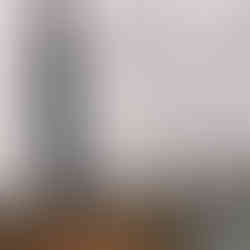

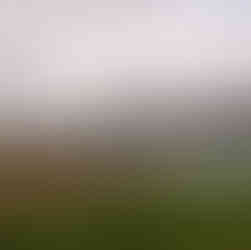


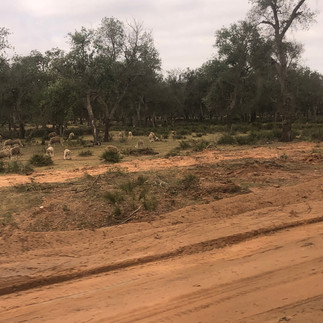
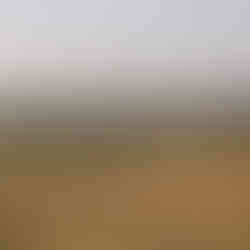


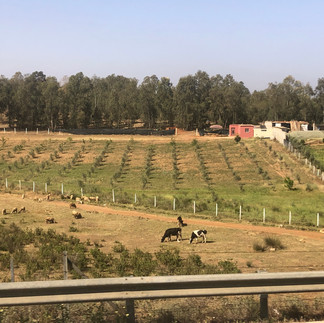




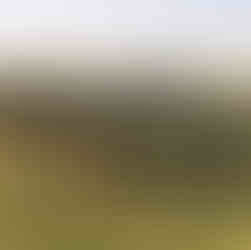

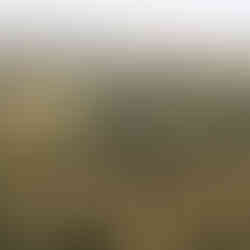

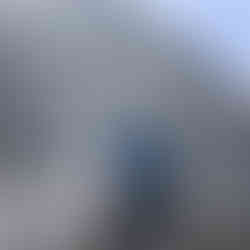

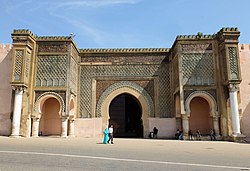
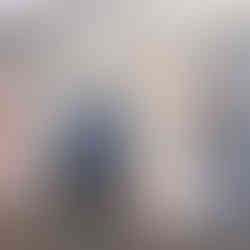

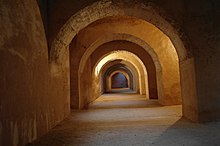

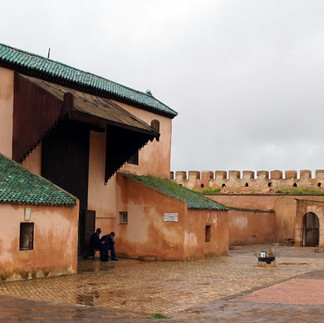



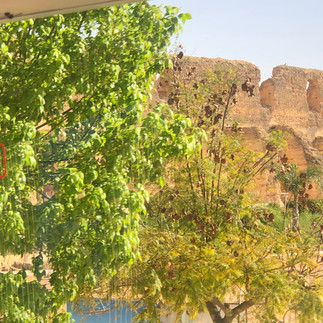

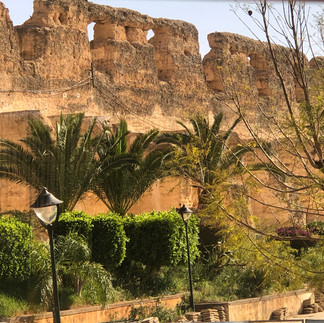


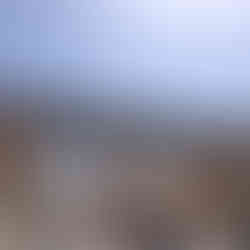






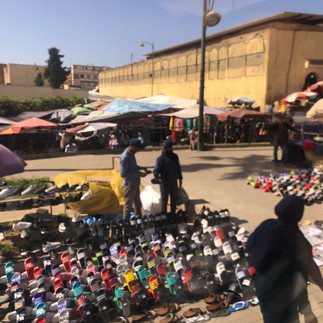



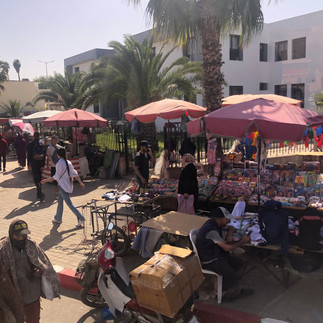



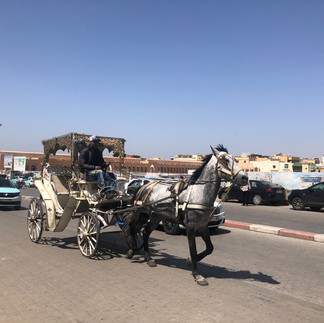


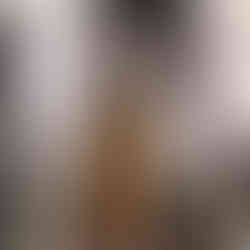

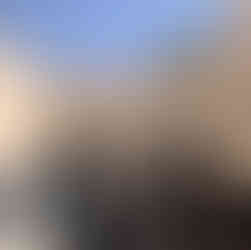


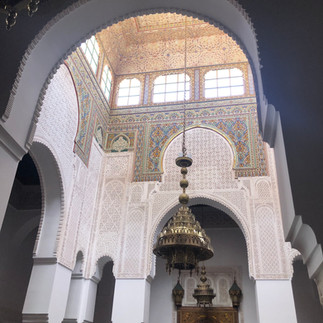

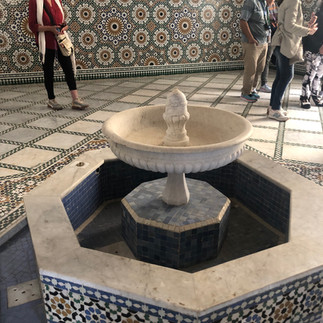

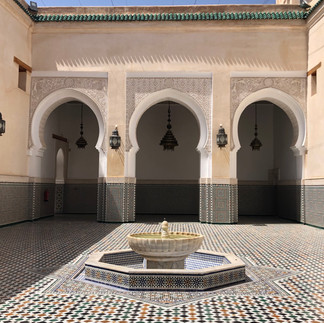


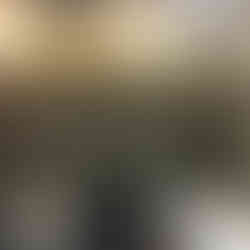

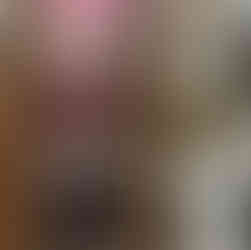

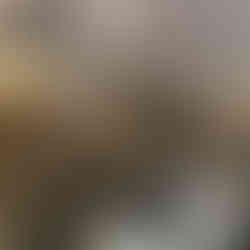











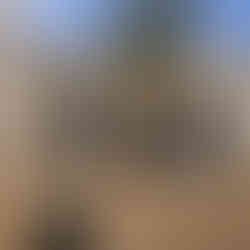




Comments